The men are said to be in good spirits as three separate drills race to meet them.
Rescuers said the leading borehole, known as 'Plan B', could reach the group overnight if drilling went without a hitch.
If all goes to plan, it means the complex final stage with the men being winched up 600 metres through a 26-inch diamater hole will be set in motion.
In preparation, the miners have been going through an exercise routine to keep themselves fit, with one of them reportedly running 10km every day through the mine's accessible tunnels.
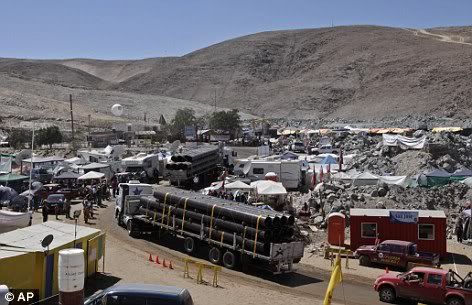
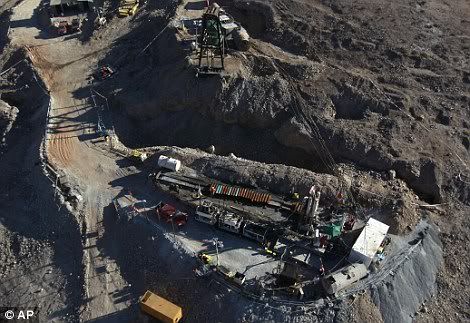
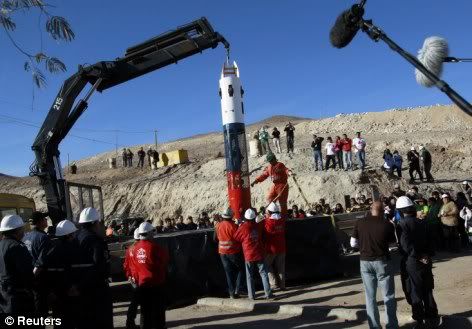
The men's families, many of whom have been living by the mine's edge in Camp Hope since the accident, were holding a second night vigil in a row in anticipation of the good news.
They were told by mining minister Lawrence Golborne: "With a little bit of luck, we can bring the contact date from Saturday to Friday."
He then raised expectations further with a Twitter message on Friday, in which he said "today could be a great day."
Tonight Plan B was reportedly less than 40 meters away from reaching the contact point 632 meters underground.
The rescue team were set to be particularly careful in the final meters to avoid any last minute problems with the drill.
However, the families may still have to wait as long as a further 10 days to see their loved ones as experts analyzing the conditions of the hole could decide it needs iron piping to protect rescue capsules from the bare rock.
If they decide conditions are stable and smooth enough on their own, the rescue could potentially begin straight away, although it is expected at least a portion of the hole will be covered with the casing.
Despite their anxiety, the families have asked government officials to go through the full casing process to make sure the rescue is as safe as possible.
"We are very excited about seeing them but having waited two months, we can wait a few more days. We need to make sure everything goes well," said Norma Lagues, mother of 19-year-old trapped miner Jimmy Sanchez.
The men, who survived for 17 days in a refuge area on the minimal food and water before contact was made from above, have since been preparing as three separate drills raced to reach them.
Once the borehole is deemed ready for the rescue, an expert 16-strong team will be set in motion for the complex around-the-clock operation.
Due to the physically demanding nature of the operation, the men have been following an exercise routine to get in shape – as well as keep trim to fit inside the tiny rescue capsule.
They have also been asked to fast for eight hours before their journey to help their systems cope with the change in altitude without throwing up.
The men will be winched up, through a pulley system, inside a bullet-shaped cage – with a diameter of 24in - designed by the Chilean navy with help from NASA to cover any eventualities.
Inside the Phoenix capsule they will be hooked to an emergency oxygen supply, two-way communications line with the surface and a biometric belt to monitor vital signs.
If the capsule becomes stuck, the men can use a mechanism to release the their cage from the top part of the capsule and lower themselves back to their base.
The top part could then be ditched and another of three reserve capsules – including an extra-small one – could be brought into play.
Each trip to the surface is expected to take between 15 and 25 minutes, according to government officials, although each round-journey – including thorough safety checks – could take around 90 minutes.
In all, they expect the rescue to take at least 48 hours.
Once at the surface, they will engage in a well-rehearsed procedure that will end with the men being airlifted to the Copiapo Hospital before being released to finally resume their lives.
They will then be given at least six months of psychological follow-up work, according to officials.
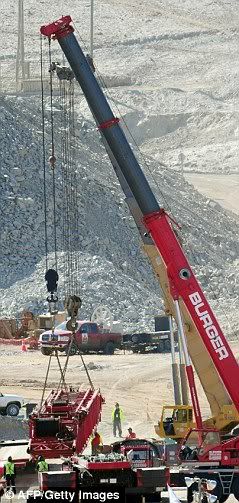

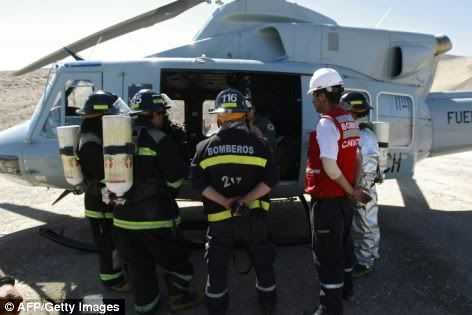
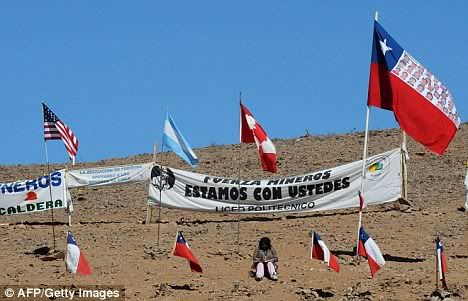














0 comments:
Post a Comment